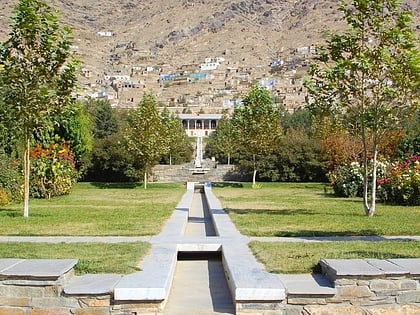Chihil Sutun, Kabul

Facts and practical information
Chihil Sutun, also known as the Forty Columns Palace, is an emblematic historical site nestled in the heart of Kabul, Afghanistan. This 19th-century palace, a quintessence of Afghan architecture, is named for its reflective pool that creates the illusion of forty columns, though the structure is supported by twenty. The palace was originally part of the larger Bagh-e Bala complex, which served as a seasonal retreat for the royal family.
Constructed during the reign of Amir Abdur Rahman Khan, Chihil Sutun was intended to be a place of leisure and administration. Its design reflects a fusion of traditional Afghan craftsmanship with European stylistic influences, which were popular among Afghan elites during that period. The palace is adorned with intricate wood carvings, latticed windows, and ornamental stucco, representing the lavish tastes and the opulence of the Afghan monarchy.
Chihil Sutun has borne witness to Afghanistan's tumultuous history, surviving through periods of conflict and regime changes. Despite the challenges of preservation amidst instability, the palace remains a significant cultural heritage site for Afghanistan. It encapsulates the rich history and artistic legacy of the nation, standing as a silent testament to the craftsmanship and aesthetic sensibilities of a bygone era.
Kabul
Chihil Sutun – popular in the area (distance from the attraction)
Nearby attractions include: Darul Aman Palace, Gardens of Babur, Shah-Do Shamshira Mosque, Kabul Zoo.










